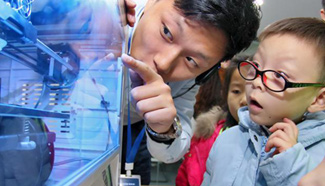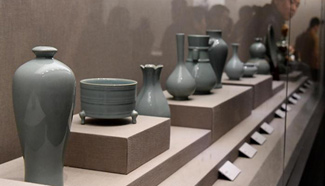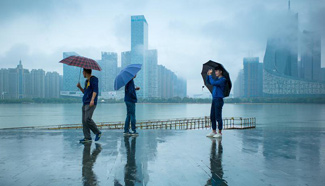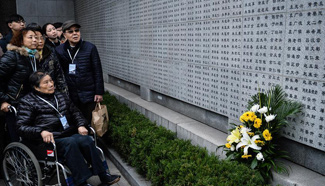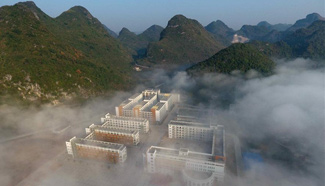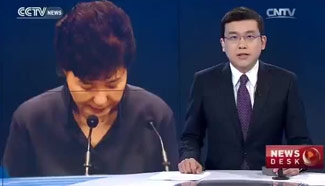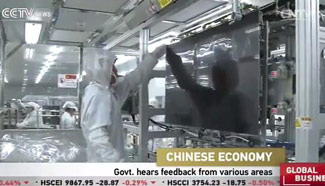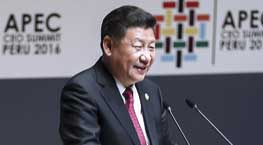MEXICO CITY, Dec. 10 (Xinhua) -- One of Mexico City's most venerable museums on Friday invited the public to a game of Jianzi, a traditional Chinese national sport known in English as Chinese hacky sack.
"Come this weekend," the San Ildefonso Museum said to its Twitter followers. "We challenge you to participate in the oriental game Jianzi, every Saturday at 1 p.m."
Kicking a colorful and feathered shuttlecock into the air without using your hands is a popular pastime in China, but in Mexico it's a rare sight, or at least used to be one before the 2016 Year of China-Latin America Cultural Exchange.
Over the past year, Latin Americans have had the chance to appreciate Chinese art, music, dance, operas and even recreational games like Jianzi.
The San Ildefonso, which is hosting one of the year's landmark exhibitions, "Masterpieces from the National Art Museum of China," is also offering a series of talks on various aspects of the Chinese culture.
In October, Mexican archaeologists uncovered thousands of fragments of a 400-year-old shipment of Chinese "export-quality porcelain" long buried in the Pacific coast port city of Acapulco, revealing the rich history of ties between China and Latin America.
The Year of China-Latin America Cultural Exchange introduced a new and modern China to younger Latin American audience.
"As you wander through the first rooms, you realize that Chinese contemporary art is not really how you had pictured it," Mexico's monthly lifestyle magazine Gatopardo wrote of "Masterpieces."
Wu Weishan, sculptor and director of the National Art Museum of China (NAMOC), said the exhibits showcased "the most representative works by the best artists of contemporary China."
Like artists around the world, they are experimenting with new art forms as well as using traditional techniques to create artwork that is unexpected and multilayered.
"China's fine arts draw experience from western arts in the search for transformation, but they also inherit tradition," said Wu.
"What Chinese and Mexican cultures have in common is that both are pursuing innovation while trying to preserve tradition. That practice creates a virtuous artistic environment," added Wu.
The exhibition, which runs through Feb. 19, also features the highlights of NAMOC's collection, which includes such traditional folk arts as intricate shadow puppets and paper cutouts.
"Masterpieces," the magazine Gatopardo said, offers "a unique opportunity to see a collection of artwork that helps to stop stereotyping a culture and an era... as well as an opportunity to strengthen the union between two cultures, as Wu said."
As part of this year's activities, art and artists traveled in both directions, taking Latin American art to the Chinese cities of Beijing, Shanghai and Shenzhen, and the provinces of Jiangsu and Guangdong, and bringing Chinese art to countries such as Colombia, Venezuela, Ecuador, Argentina, Brazil, Chile, Cuba, Costa Rica,Peru and Mexico.
Tannia Luna, an expert in international relations at Mexico's National Autonomous University, said the Year of China-Latin America Cultural Exchange has strengthened the friendship and cooperation between the two regions and ushered in a new and more fruitful phase of bilateral ties.
"These exchanges have met all expectations and even surpassed them," said Luna, and as a result "this new China-Latin America relationship goes beyond political and economic negotiations," said Luna.
This dynamic exchange is poised to continue.
To celebrate 45 years of diplomatic ties, 2017 has been declared as the Year of Chinese Culture in Mexico, featuring a packed calendar of events and cross-cultural exchanges.

